[Welcome to Theme Park Story World. Adventure awaits! Please wait behind the line for the next available tram.]
I don’t know about you, but I can’t turn around these days without running smack into another new mixed-use district to be fabulous in.
Does it sometimes strike you that rejuvenated downtowns, amenity-laden corporate campuses and magically appearing "town centers" are just glorified playgrounds? Have you ever suspected that places screaming with authenticity might be "Truman Show" facsimiles thereof? That the pub-strewn maelstrom of mixed-use districts, squares and city centers has brewed up a menu of narratives making entire cities into theme parks? Moreover, do you care?
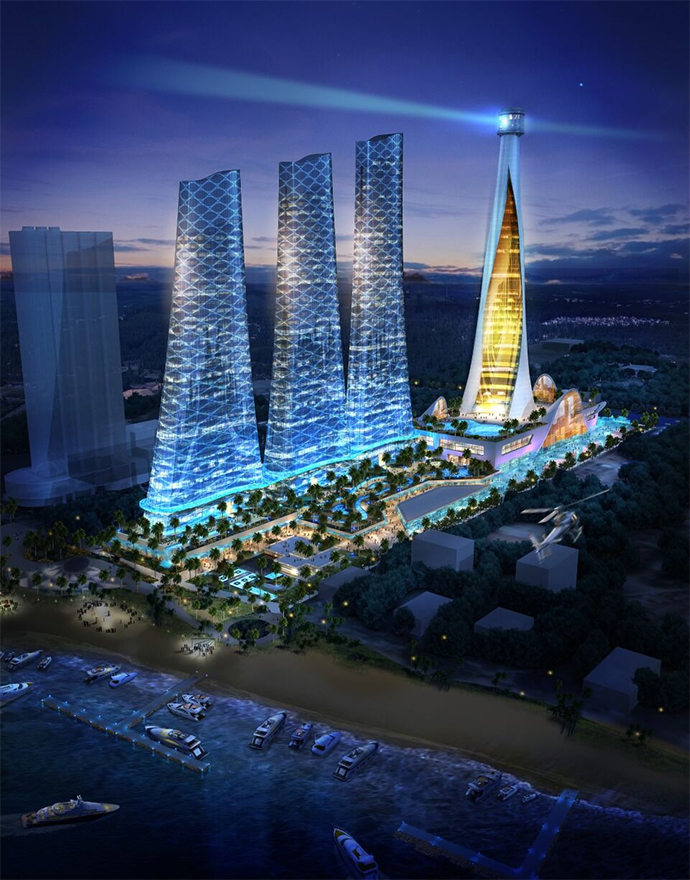
Dreams, it appears, really do come true. And once you get over your queasy feelings about fiction, you might just see how practical dream worlds can be.
ITEC Entertainment for 30 years has designed and developed "themed entertainment solutions and commercial properties" for companies including Disney and Universal, from its home base in — where else — Orlando. But its kingdom extends worldwide like an Epcot in reverse, with projects ranging from Viking Land in Norway to Bridges of Discovery in Indonesia.
In November, ITEC announced a strategic plan to grow its business in China from an office in Shanghai led by T. Scott Schriefer, whose resume includes posts with Dubai Parks and Resorts and Fox Studios Australia. "The cornerstone of ITEC’s culture is our relentless focus on quality," said ITEC Entertainment President, CEO and Design Principal Bill Coan. "Scott’s leadership and expertise will ensure our high U.S. standards continue to be delivered in a 24-hour-a-day business environment which has become critical to our success in the development of unmatched, immersive guest experiences in Asia and throughout the world."
One of the firm’s latest mixed-use projects is a multi-generational lifestyle project on 119 acres in Thailand called "The Forestias," valued at $2.8 billion. In January, construction began on a major mixed-use and entertainment complex in Harbin, China, where ITEC is providing master planning and concept design services for Harbin Paradise Park, including the first Ripley’s Believe It or Not! attraction in China and Rainforest Bay Aqua Park – a multi-story indoor water park with pools and caverns, cabanas and multiple slides, zip lines and "elevated activity gazebos."
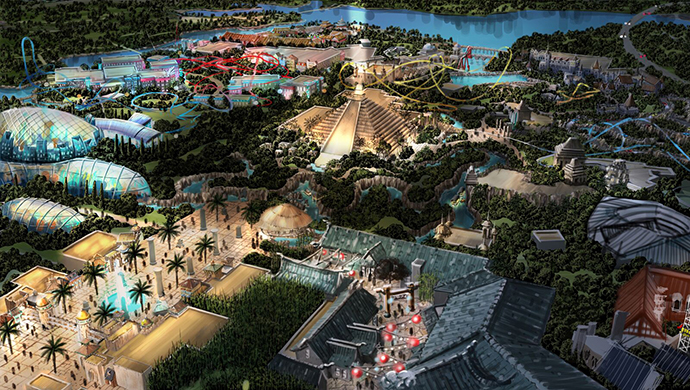
In an interview, Coan tells me ITEC’s elevated activity is connected directly to the rising tide of mixed-use development.
"Clients engage us in a lot of different ways," he says. "They may bring us to work on a specific entertainment part of a mixed-use project. Once we get started, they see this interesting creative process we go through. Storytelling is a big part of our work. They see how it might expand to the whole development."
Clients come to ITEC because of a portfolio of work built on a Disney heritage.
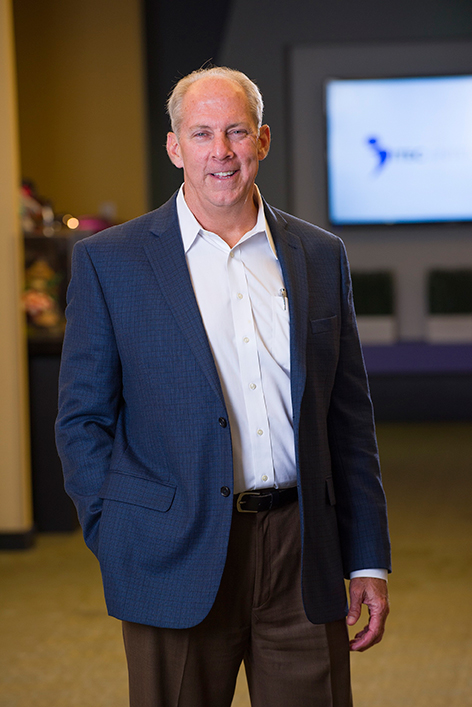
"I’ve been doing the theme park work since graduating from school in 1978," Coan says. "I went to work for Disney immediately." Fourteen years later, after what he thinks of as a second education, he found himself in Paris. Then he arrived at ITEC, "a private firm set up to be like a commercial version of Imagineering," Disney’s famous R&D method and operation, offering services to private clients around the world.
At first, Disney itself was the single client. Then came Universal Studios. Ultimately commercial clients started coming to ITEC from the slightly less imaginary world of retail, and the company started seeing a lot of work in Japan, where the themed entertainment business was catching fire. Eventually the overall portfolio started to include more services, moved toward a nearly even split between traditional entertainment projects and non-traditional clients in commercial real estate, resorts and hotels.
"These days we’re being invited in earlier in the process," Coan says. "We create a backstory, run it through our creative process, and begin creating environments to allow the mixed-use developer to apply some success standards like you’d see at Disney or Universal."
The Thailand project is a case in point. Part of an entire "smart city" development that includes senior living, a medical campus and a commercial mall, The Forestias is located on a forlorn brownfield parcel that at one time, before urbanization destroyed it, was home to a forest. [Cue the spotlight, downstage right.]
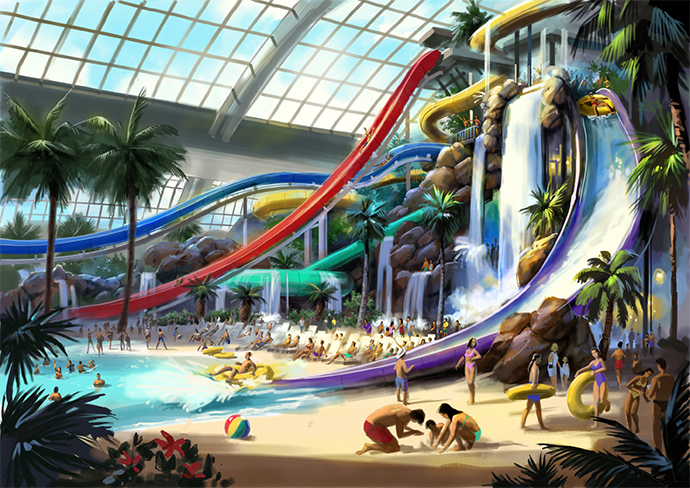
"We created a story about the last remaining pristine rainforest," Coan says. "We created the idea that it never really went away." Seizing on the natural urge to save it, the narrative also allows for that organic source to be a wellspring for the entire area’s redevelopment.
"The aspiration is this sustainable, smart city development," Coan says. "We’re creating the forest in a very fast-paced way, just like we did at Disney. People will believe they live next to a forest setting because it looks and acts like that."
Wait. C’mon. Do you really think we’re gonna fall for that?
The short answer: Yes.
"You go to storytelling because you want to add some romance to an otherwise standard development," Coan explains, gently tugging the wool back down over my eyes. "You give people a raison d’etre, and if people believe it, it has a legacy even if it doesn’t have one," a legacy that extends across residents, professional tenants and the base of service providers. "It becomes a community in short order, which is the goal of the developer."
Dwell Time
Asked if ITEC is finding business amid the fervor for transit-oriented development, Coan says, "We absolutely are," and describes an unnamed client developing millions of square feet of mixed-use in New York:
"They brought us in to do exactly what I was telling you, combining fantasy with historical reality," he says. "We’re evolving this place to appear as if it were repurposed from its original use to this modern, transit-driven development. You’re looking at a great piece of land, a mix of architectural styles, but they don’t have a sense of it all belonging in one place. We write a story, develop characters that may have lived there, and it makes people believe that light pole looks that way, that park bench, those graphics on the wall. We can tell them what kind of retailers to have there to build on the story.
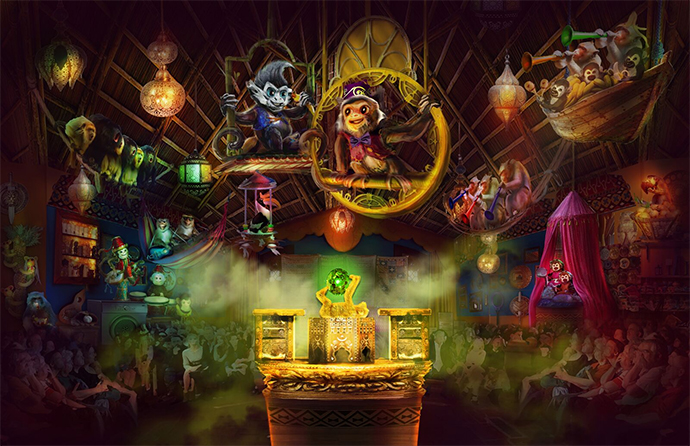
"Most of these major developers look at these big old giant plans from 3,000 feet in the air, and it makes it difficult for them to imagine the experience at five feet. How does someone who’s lived in this town for 40 years experience it, versus the person who just moved there? The goal is real simple: Get more people to come more often and stay longer and spend more money. If we can contribute to extending the dwell time, we’ve done our job."
Some communities think the magic wand for dwell time is putting up yet another big Ferris wheel. Asked what he thinks about this trend that seems to have run its course, Coan says, "I can show up in New York to a big meeting, and within 30 minutes someone suggests the big wheel. All I can do is be quiet and groan. I have one within three miles of my office. But it’s sucking wind every day. Those are pie-in-the-sky ideas. My approach is really simple: The client always wants something ‘iconic.’ In my mind, when I think of an iconic experience, it’s ‘If I can get someone to come to my venue and have a really great experience, they’ll come back.’ If they come and ride a Ferris wheel, they don’t come back. It’s iconic in the sense of people seeing it, but not in the sense of an experience."
Mix an environment, entertainment and "food service, food service, food service" in the right formula, says Coan, and you create an experience significant enough to bring you back. "The goal is to keep people all day," he says. "That’s why [theme parks] have fireworks at the end of the day. Spending goes crazy after 6 p.m."
One Big Theme Park
When ITEC launched the Shanghai office in November, the company had more than 30 projects active in China. Coan calls China "the wild west" when it comes to tourist destination development, with developers spending billions of dollars based on scant feasibility analysis. Movie studio "cities" were all the rage at one point. Today, he says, the big themes are dinosaurs, marine and animal life. Whatever the narrative theme, he says, the projects have two consistent through-lines: Formal or informal backing of the Chinese government, and selling residential real estate.
"One hundred percent of the projects we’ve worked on were built on selling apartments," he says. "The entertainment or show was there to help sell real estate."
In other words, a lot like Florida back in the day.

Wine regions — much as in the States — also have sprung up.
"The Chinese went and bought some of the best producing vineyards in Europe, and they’re now shipping the grapes to China," Coan says. "That then lends itself to the idea, ‘Why wouldn’t we have tours?’ We’ve worked on a couple of those wine facilities."
Even manufacturers attract gawkers.
"They produce something that’s so big and well known it becomes a tourist attraction itself," Coan says. "Those industrial tours are happening more often now."
They’re Watching Us? OK.
Sometimes the layers of make-believe create their own industrial clusters of jobs and expertise. Much like the movie studio cities themselves, themed destinations become sustainable communities in their own right, often with advanced skills.
"There are more design, engineering and construction disciplines involved in a theme park than just about anything you can imagine, because everything is there," Coan explains, from standard construction techniques to automated control systems on the back end.
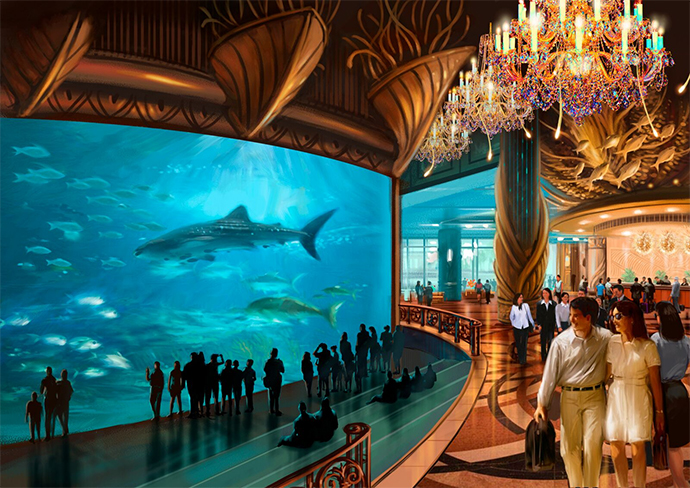
"The technology being applied is pretty remarkable," he says. "We’ve been putting fiber in theme parks since the days of Epcot Center." Rides have gone from cards to handheld devices that allow a manager to track things in real time. "We created those systems," says Coan, noting the sophisticated communications technology now present in such places as Times Square, the Ginza district in Tokyo and Las Vegas. Even graffiti can be made into a controlled phenomenon, he says.
"Graffiti is a big mess for most cities, so we introduced a graffiti wall so it’s all technology, we can erase it, and they can come in and do graffiti on it the next day."
Essentially, it’s about stagecraft and set construction, from piped-in birdsong and fog to the ultimate behavior controller: light levels.
[Cue the sun.]
"We want to control light levels from one end to the other," says Coan. "Studies show that people’s enjoyment of a space is related to light levels. You change and adjust it depending on the time of day. We’ve been doing it in theme parks for years, but never thought we’d do it in an urban development. Theme parks literally control you almost every minute you’re in them. One key thing is balance: We want people distributed throughout the park evenly. We spread out the aggressive attractions for the 16-year-old boys. Once the sun goes down, that includes the light levels. Certain parts will be brighter than others, where we want activity, and others lower, to eat and relax. The goal is to distribute the people until we announce that we’re closing — and then it’s every man for himself to get out of there."
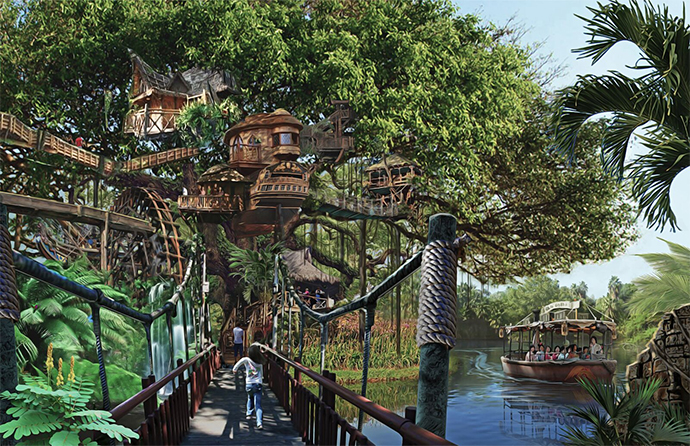
Yes, there’s nothing like the klieg lights coming on and a scramble for the exits to shatter a cushioned fantasy world. Can’t we have it stay open 24/7? After all, if the goal of a theme park or a mixed-use development is "to enhance the number of experiences per hour," as Coan puts it, what’s to keep us from bringing our dreams to the workplace? Can it be long before corporate headquarters campuses themselves expand from fun slides next to the staircase and flowing beer kegs to entire themed environments, in order to keep those valuable young workers around for even longer hours?
"We have not gotten inquiries like that, because those are trailing indicators, and a little more conservative," Coan says. "I can see the crossover. If someone came to us and said they want to do a corporate campus, we’d do what we do best: Research the history and culture, the backstory, the reason for that campus to exist. We’d have a storyline that they would approve and work into the overall branding strategy of that corporation. It’s not something we promote or chase, but if somebody walked in here tomorrow with that challenge, we’d be thrilled with it."
Thrills, after all, are what we seek, between stops at the food court.
[You’re now exiting Theme Park Story World, where the places are sometimes pretend but the jobs and money are always real. Thanks for visiting, and come back soon!]

